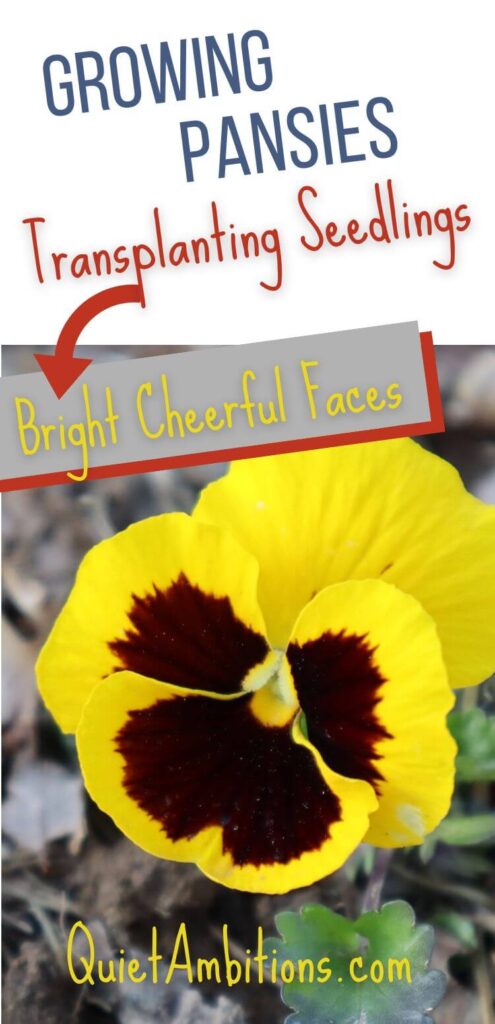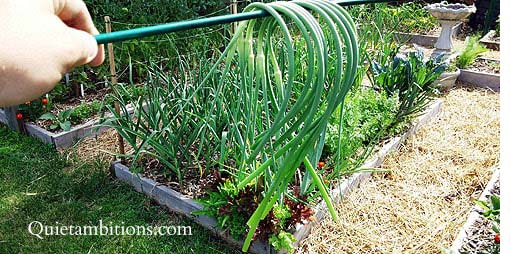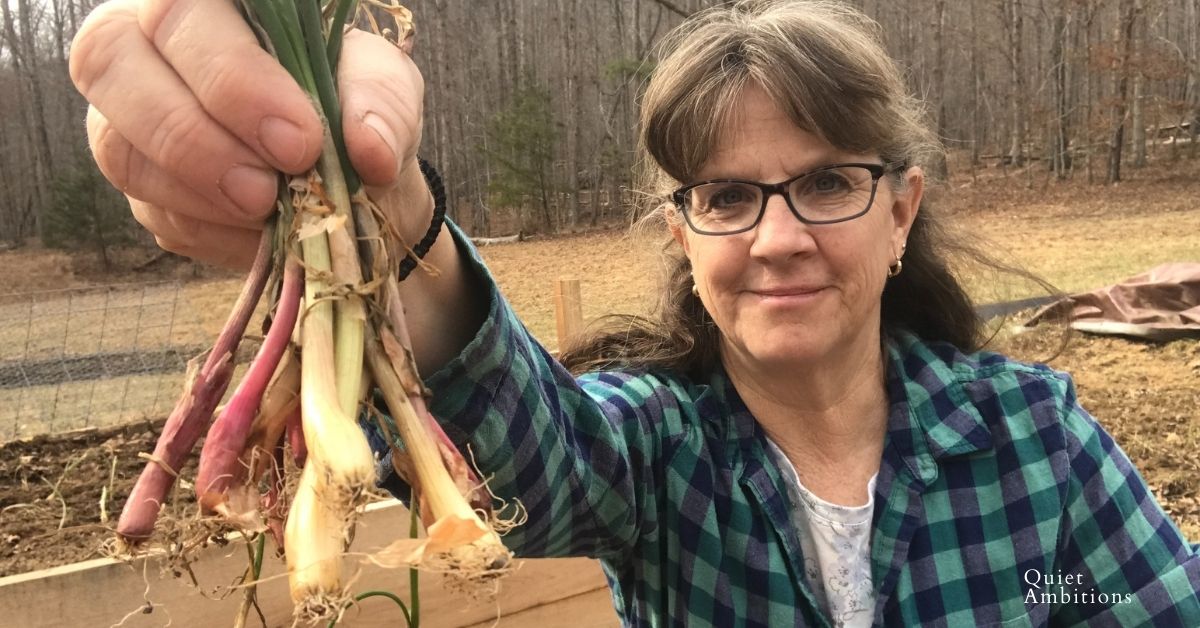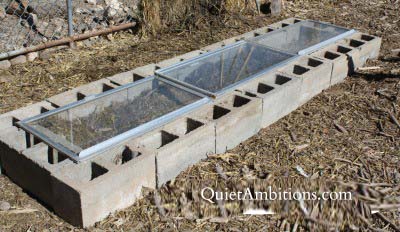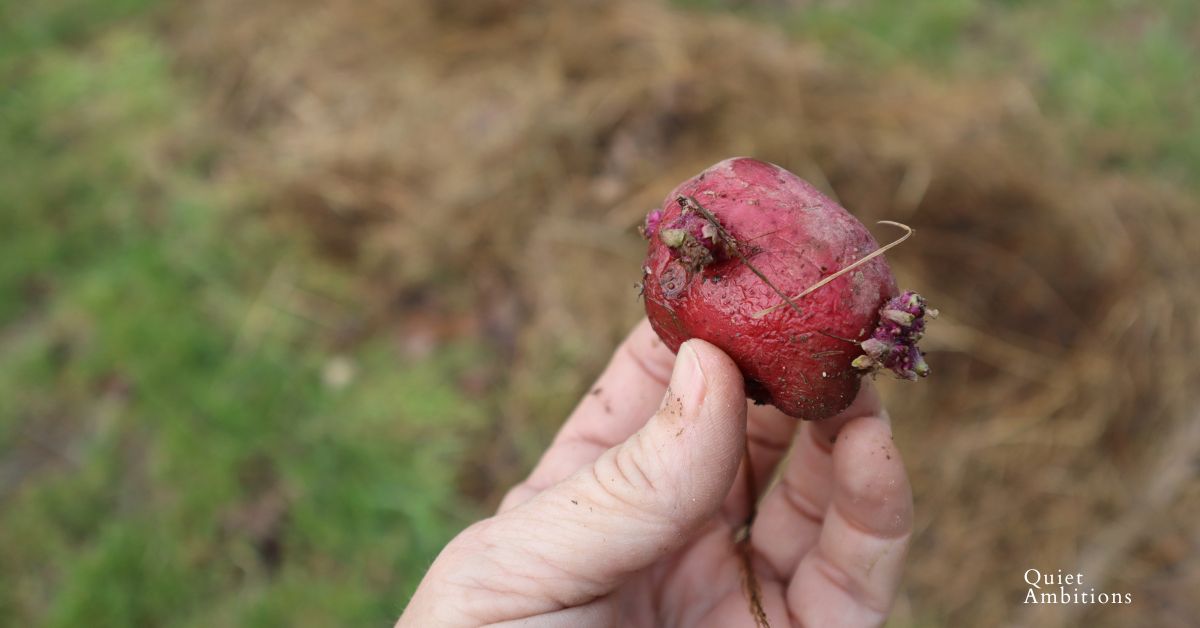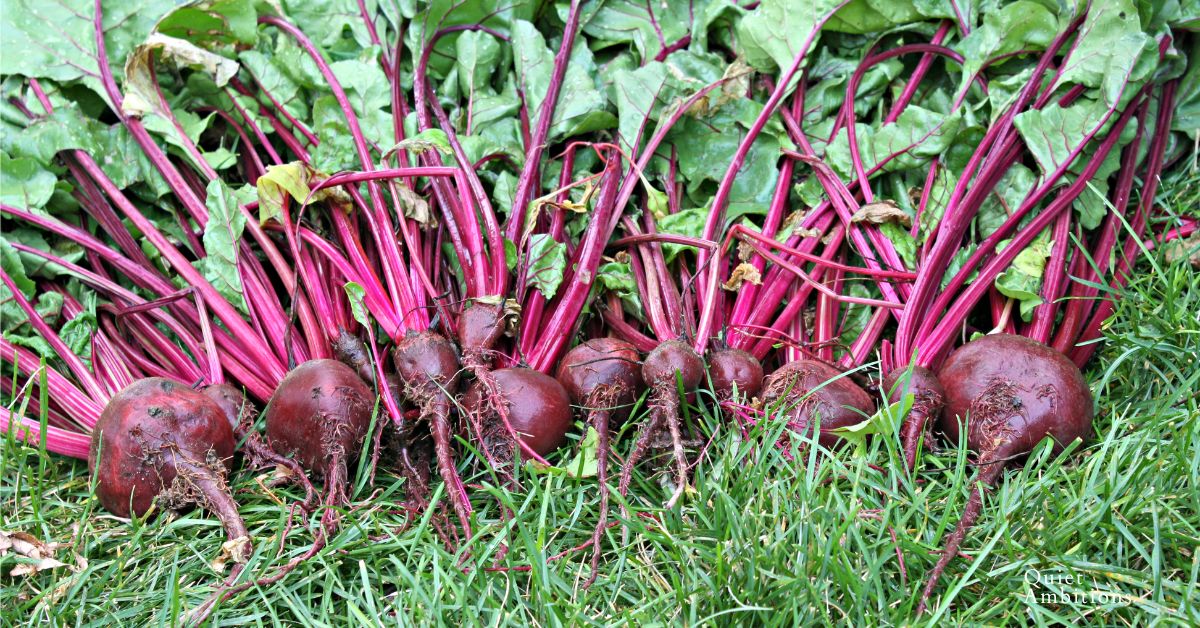How to Grow Pansies
Have you ever wanted to add a splash of vibrant color to your garden? Learn how to grow pansies. Their bright, cheerful faces bring life to any garden and their hardy nature allows them to bloom in almost any climate.
If you’re looking to add a bit of color to your garden this season, then you’ve come to the right place! In this article, we’ll discuss how to successfully grow pansies in both sunny and shady areas, how to choose the right soil and fertilizers for them, and how to keep them blooming for as long as possible. Pansies are a low maintenance flower so it doesn’t take much effort at all.
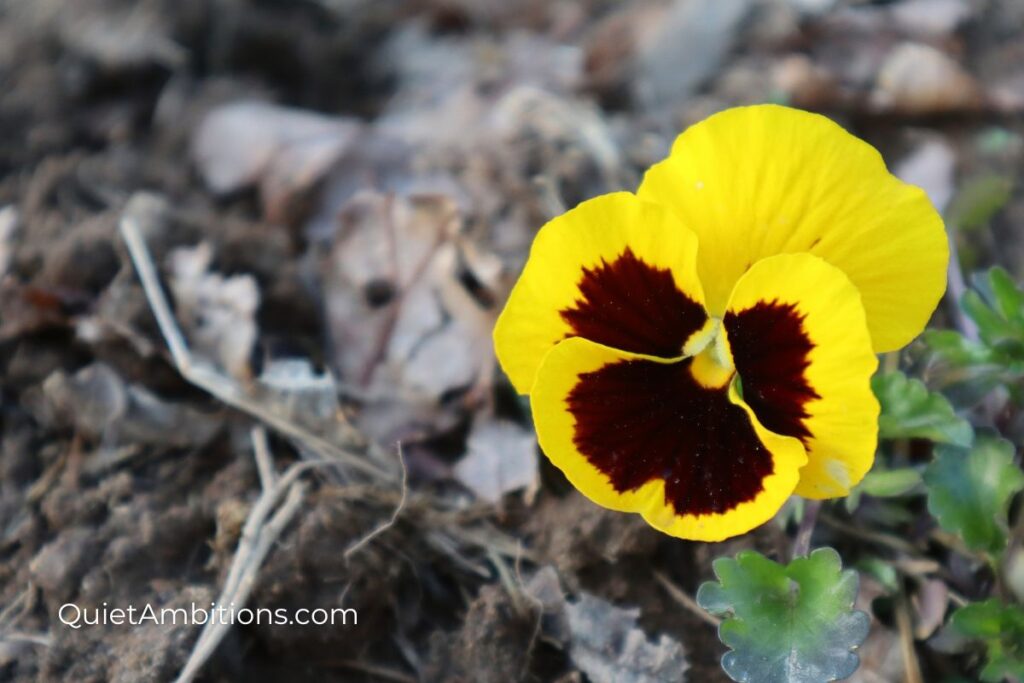
We moved from Colorado to Tennessee last year, so I’m planting all kinds of new things this spring and making our new place feel more like home again. Recently, I planted pansies, a beautiful flower commonly enjoyed in flower beds and containers. I love them! And I thought some of you might enjoy them too. It has been a perfect first thing to plant here and has brightened my days.
Growing Pansies Quick Tips:
- Suggested Soil Temp: 62 to 68 degrees F
- When to Sow Indoors: At least 8 to 10 weeks before Last Spring Frost, if not longer.
- When to Plant Outdoors: When soil is workable.
- When to Grow Pansies: Spring, Fall
- Seed Depth: 1/16” to 1/8”
- Days to Germination: 7 to 21 Days
- Spacing: 2” to 9”
- Light Requirements: Partial Sun/Full Sun
- Watering Requirements: Frequent, but moderate (make sure soil drains)
- Good Companions: Other flowers
- Bad Companions: NA – they pretty much get along with everything
Growing Pansies from plants or seedlings.
While you can start pansies from seed (more on that in a moment), they’re most commonly purchased as seedlings and then planted directly into your garden when the soil is warm enough to work. This is what I’ve always done, and I’ve never had a problem growing them this way. When you purchase seedlings look for stocky plants that have not had to stretch for sun.
Hardening Off Seedlings
If you’re using homegrown seedlings in particular, make sure to harden off your plants before transplanting them outdoors. “Hardening off” simply refers to the period of time where you gently acclimate young plants to natural weather fluctuations, by exposing them to the outdoors a little bit at a time. Pansies are pretty hard so this shouldn’t be difficult. Simply put them outside for a few hours and bring them in at night. Then put them out the next day for longer. Gradually you’ll be leaving them out all the time.
If you are purchasing seedlings from a local greenhouse it could be they are already hardened off. If you purchased pansies that were on a table outside, you should be good to go.
How to Transplant Pansies
Once you’re ready to plant your pansies, dig a hole roughly the size of the roots. if your ground is hard go a little larger to give the roots some space. Gently remove the flower from the container, being careful not to damage the seedling in the process.
Spread the pansy’s roots out with your hand. The plant you see in the image is nicely grown. It is not root bound. Sometimes you’ll have bigger roots that are wrapped around and around. Don’t get overzealous and tear the root ball apart. Just rough the root ball up a bit so the ‘plug’ isn’t tight and the roots will grow out into the soil.
Put the plant into the hole and fill it with dirt. Tamp down lightly and water immediately after transplanting.
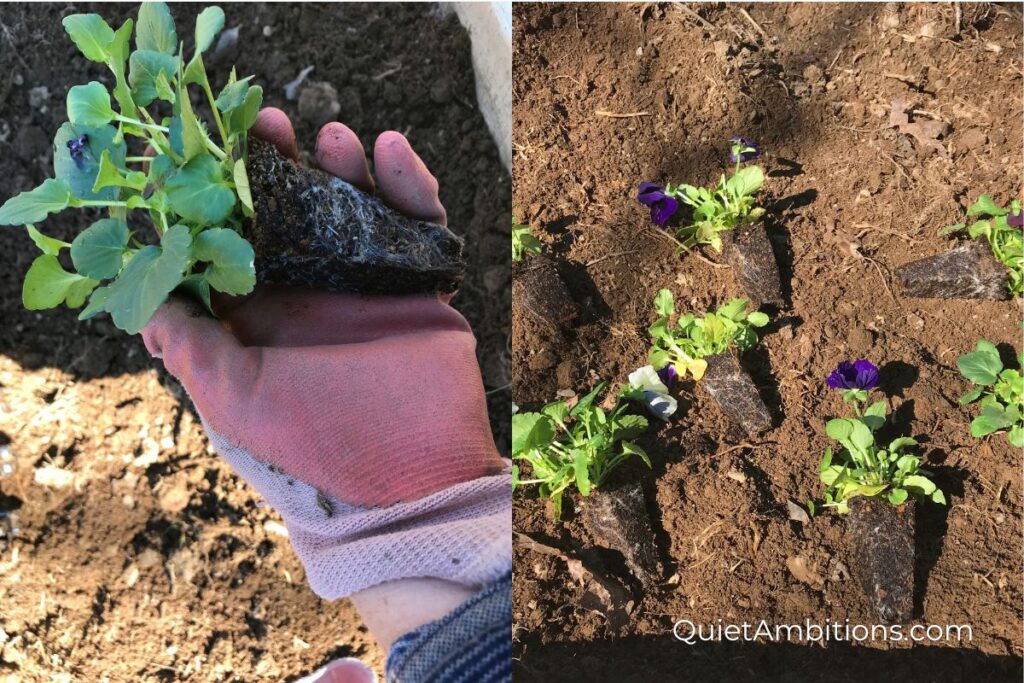
Pansies should be planted in rich, slightly acidic soil. Ideally, the soil should be high in organic matter and drain well, so the flowers don’t sit in a puddle of water. (This is true for most garden plants, in my experience.)
I like to plant pansies around the edge of my vegetable beds. They’re such a beautiful addition, whether by themselves or paired with other flowers. I also like to plant them in my flowerpots.
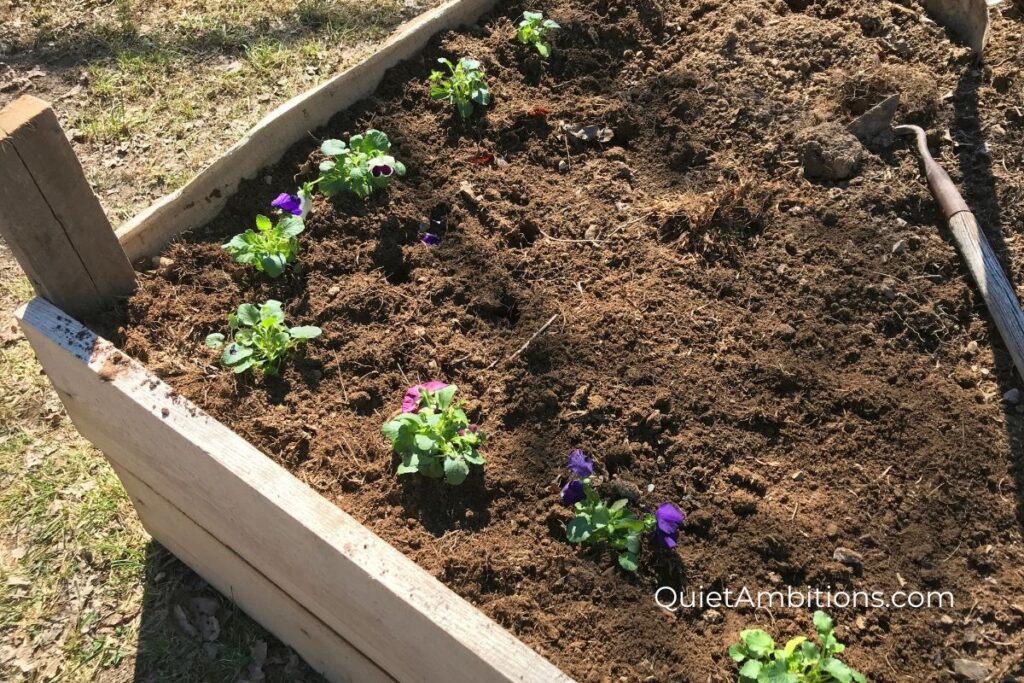
Growing Pansies from Seeds
Pansies are most commonly planted from seedlings (and that’s reportedly the easiest method), but you can also plant pansies from seed. I have never started pansies from seed. I just purchase the seedlings.
From my research, they need started indoors at least 8 to 10 weeks before your last frost in the springtime.
Although they can be, they aren’t usually direct sown into the garden, so if you want to grow from seed, I suggest starting them them indoors.
How to Germinate Pansies and Starting them Indoors
If you want to try it, you can start pansy seeds indoors. It is worth noting that pansies aren’t the easiest seeds to germinate, indoors or out. I read that they can sometimes take up to three weeks to even sprout!
You may want to stratify the seeds for two weeks before planting, to help encourage higher germination rates. Stratifying, in this case, simply means putting the pansy seeds in a container in your refrigerator for a few weeks to mimic the natural winter environment seeds experience in the wild.
Sow them indoors in warm soil, ideally in a plastic seed starting trays or cells filled with moist soil mix. I’ve tried egg cartons with success for other flowers. Keep them covered as they germinate to keep the soil moist.
When they sprout, remove the cover and make sure your seedlings receive plenty of light. Transplant seedlings to larger cells or pots as they grow if needed. Or replant into the garden.
If you want to just start outdoors, you can also directly plant seeds 1/16” to 1/8” deep into rich, well-draining soil. One extension office offers detailed instructions on this page, and I thought it was quite helpful: https://extension.usu.edu/yardandgarden/research/growing-pansies Pay attention to the time of year you want to plant. It can be very early to get spring seedlings or it can be mid summer for fall seedlings.
When Can You Plant Pansies?
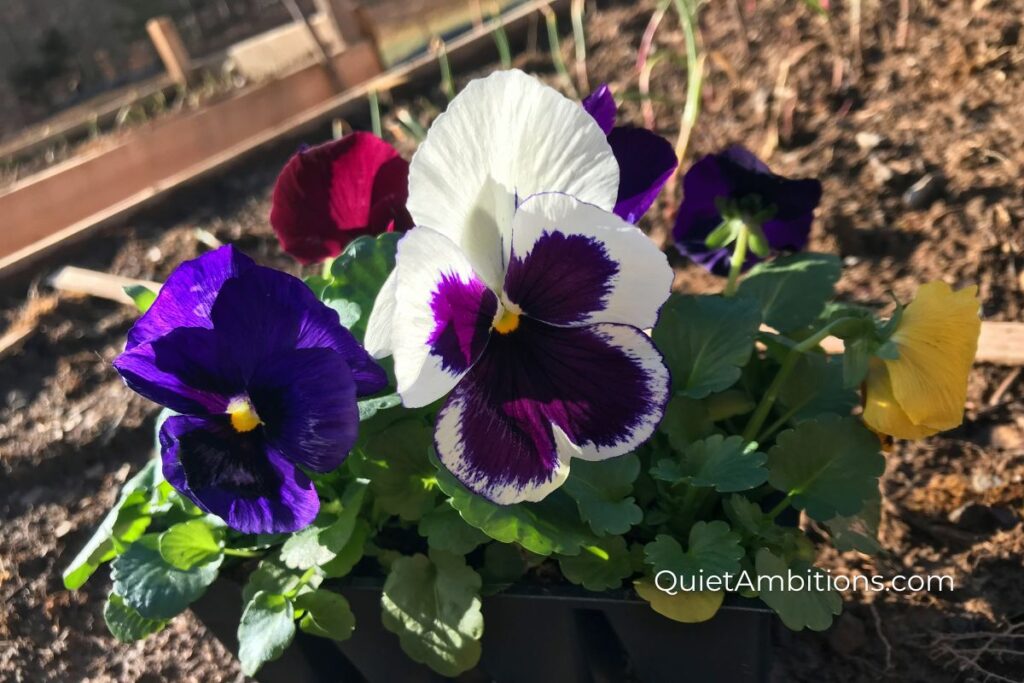
What’s the best time to plant pansies? Well, they’re a cool weather flower, so they’re most commonly planted for spring and sometimes fall/winter blossoms, when the weather is still cool outside. Some light frosts won’t hurt your plants.
Pansies don’t do well in hot temperatures or hot sunshine, however, so keep this in mind when choosing a place to plant them. You may want to provide shade in the hottest part of the summer.
When Do Pansies Bloom?
Pansies are a cooler weather flower, producing their colorful, 5-petaled blossoms in the spring and summer. They prefer something like 40 degrees F at night and 60 degrees F in the day, if that gives you a better idea. 🙂
Once they start blooming, pansies will continue flowering until the temperatures get too high. The plant will continue growing but the blooms will fade.
Deadheading is said to help pansies bloom longer. Deadheading simply means removing the spent flower heads and/or stems to make way for more fresh flowers. The plants goal is to produce as many blooms and seeds as it can. By removing spent flowers the plant wants to create more. This helps prolong and encourage additional blooms to set. Gently pinch off the heads with your fingers or cut off the spent stems.
But…even when the heat stops the blooms, the good news is, they may bloom again later in the year when temperatures go back down.
How to Deadhead Pansies
Remove the spent flower heads and/or stems to make way for more fresh flowers. It’s as simple as pinching it off with your fingers or using a scissors to snip the spent flower blooms off the plant. This helps prolong and encourage additional blooms to set.
How Cold Can Pansies Tolerate?
Pansies can tolerate quite a bit of cold, especially compared to other flowers, even frost and occasional freezes. Down to 25 degrees F is about as low as pansies can tolerate without their foliage being fried, but even then, they might come back if the weather warms up again. This page has some good pictures of pansies in cold and hot weather:
How Close Together to Plant Pansies
You should plant pansy seedlings 2” to 9” apart. This isn’t so much a hard-and-fast rule as it is something that depends on the variety you’re planting and how you want your flowerbeds to look. I like a mass of flowers so I tend to go closer rather than farther.
How Much Sun for Pansies? Can Pansies Take Full Sun?
Pansies grow in both partial shade and full sun. However, temperature is the main thing to keep in mind here. For pansies growing in warmer weather, morning sun is better tolerated than afternoon sun. And more shade during the heat is better as it will keep the plant cooler.
Growing Pansies in Containers
Pansies are a popular choice for container gardeners. One bonus for growing pansies in containers is move-ability. You can move the containers to a shady or cooler area during the heat of the summer. Then move them out when the weather cools and you’ll hopefully get blooms again. Then you could even move them into a greenhouse or sun room when the real cold weather comes.
Growing pansies in hanging baskets is also another beautiful option!
How to Fertilize Pansies
Pansies need nutrients like any other plant, so you may want to fertilize them occasionally using something like 10-10-10. (that’s a type of fertilizer that contains equal parts of nitrogen, phosphorous, and potassium, check your bag for the contents.) or even just some manure, compost or other amendments.
This would be more important if you’ve got them in containers or hanging baskets. Mine were just in my garden bed and Didn’t really get any special fertilizer and did very well.
Are Pansies Annuals or Perennials? Do they Come Back year after year?
Pansies are technically a type of perennial/biannual, but they’re grown more commonly as annuals instead.
- Perennial plants come back season after season.
- Annuals are grown for only one year.
In mild winter climates, you may be able to overwinter your pansies by protecting them with a heavy mulch, allowing them to come back and bloom again in the spring!
I’ve read there are some varieties that are especially bred for cold temperatures. Mine are always just annuals. (I may try to overwinter some next year in my greenhouse just to see how they do.)
Common Pests
The main pests for pansies? Slugs and less commonly, aphids. You can use traps for slugs, while aphids are usually controlled with something like insecticidal soap, which kills those pesky little insects. (Can you tell I really dislike aphids?! Ick.). My pansies had no issues this year.
FAQs & Tips
Yes, pansy flowers are edible, providing they were grown without chemicals! Imagine how pretty they would be in salads! I have to say that I have not tried to eat pansies. If you have can you tell us what it tastes like in the comments below? LOL. I don’t think my husband would like to try it but I might be brave enough.
Someone asked can dogs or cats eat pansies? I’m not sure if my dog ever ate any of our pansies so I did a bit of research. What I found surprised me. Pansies are considered safe for dogs, yes. Pansies aren’t as safe for cats. They’re not deadly, to be clear, but they can still be “mildly toxic” to cats. Even though humans can eat it, cats should avoid them it appears.
Pansies also make a beautiful dried flower. To dry pansies, pick flowers and press them between the pages of a heavy book until they’re dry. Protect the pages of your book with a few layers of blank paper around your flower. When the flower is dry it will be very delicate so handle it carefully. The colors will be maintained and makes a beautiful dried flower to use in art or craft projects. Does anyone else remember making book marks as a kid?
Pin for Later
